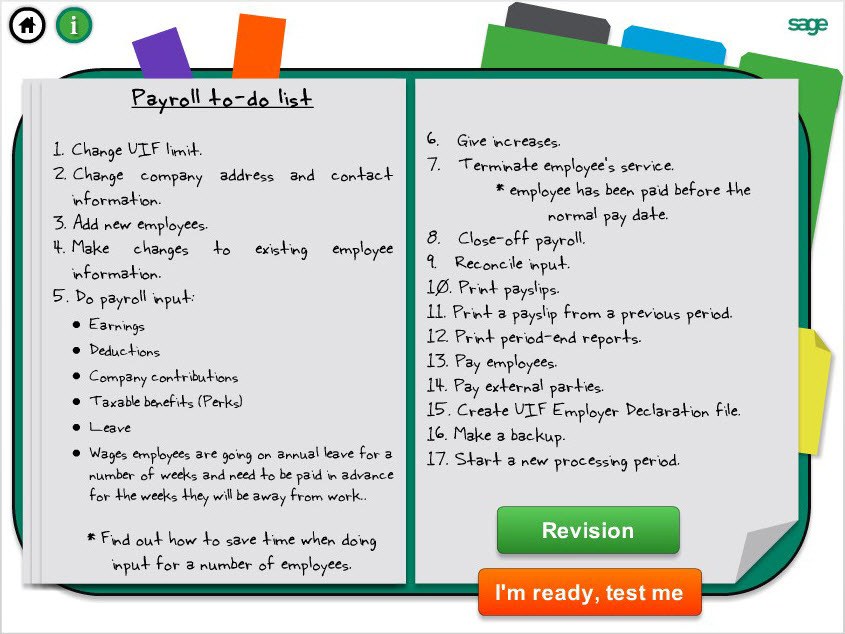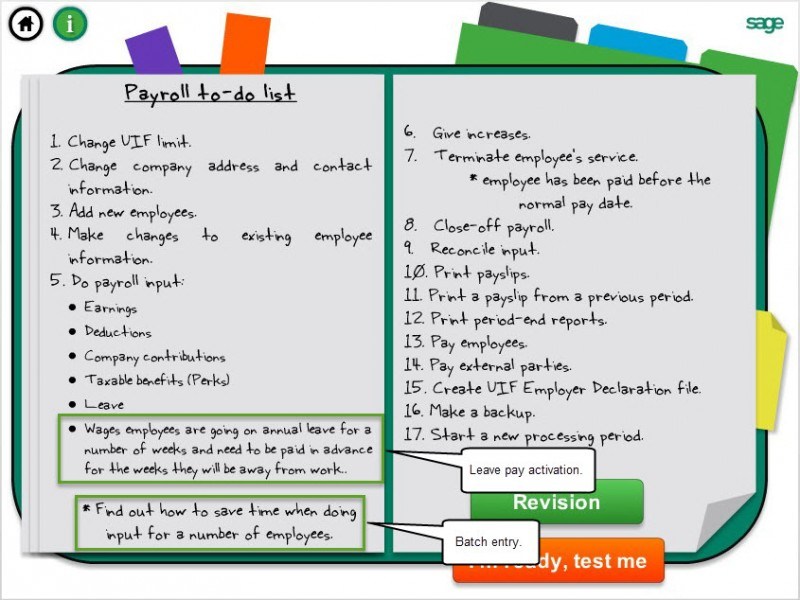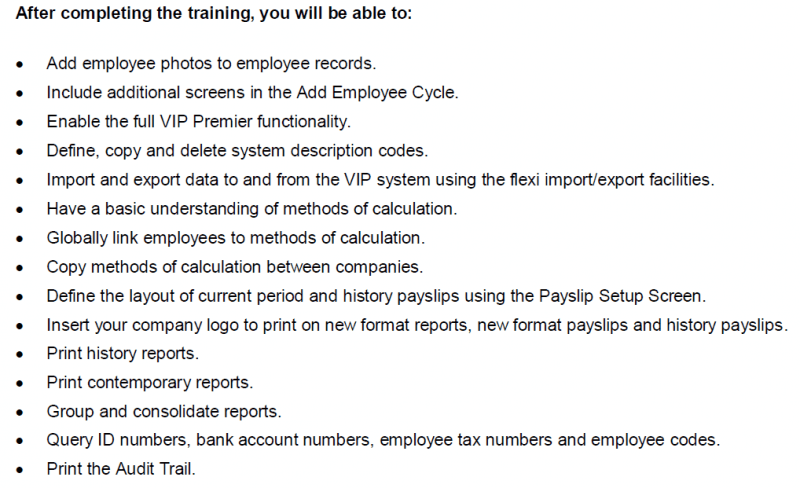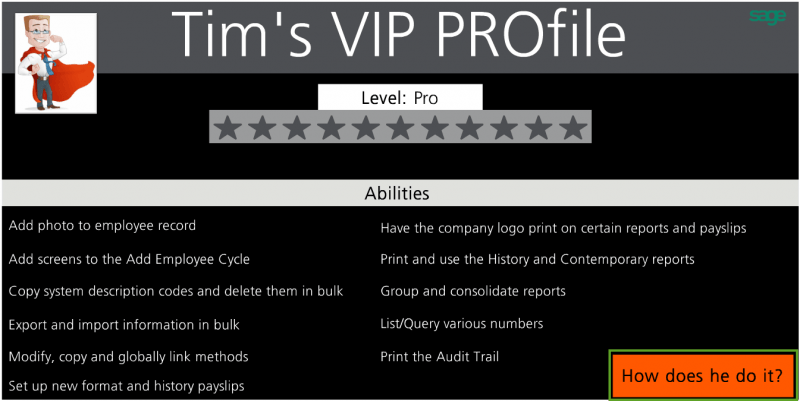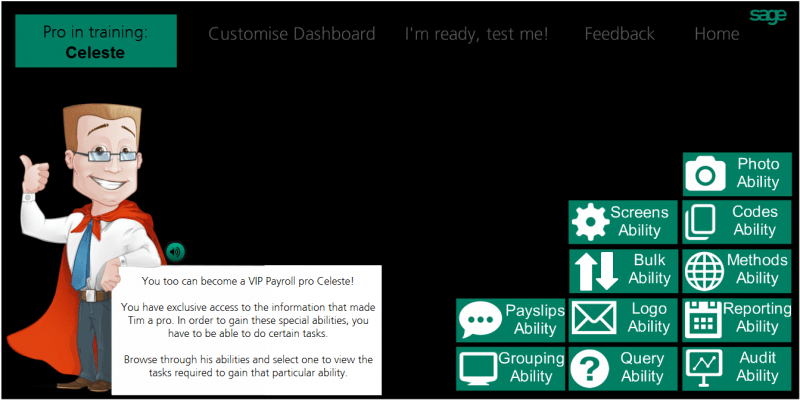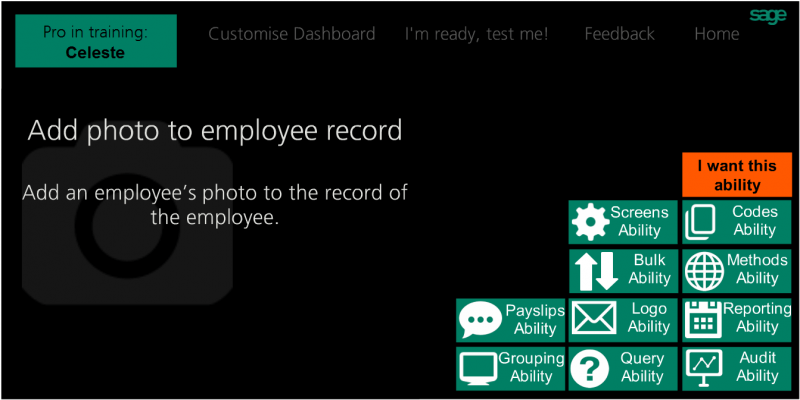How To Create Context In Your eLearning Design
There have been numerous articles written about the importance of creating context in your e-Learning design, here’s one of my favorites by Ethan Edwards from Allen Interactions: A Fresh Look at Context in e-Learning Design. In this article I will show a few examples of how I successfully created context in e-Learning designed for clients using our payroll software.
Why creating context was the ‘secret ingredient’ in our product e-Learning design winning recipe and how we did it.
The most important thing to remember about any client, is that you can never assume that they have come to the same conclusions as you, and therefore the intended learning may never happen, unless you provide context. In previous versions of our e-Learning we embarked on a mission to provide a carbon copy of the manual that the clients would get if they attended classroom training. This would then give them the best chances of having a valuable and class-equivalent learning experience, right – WRONG! We ended up with an e-Learning solution yes, but one that was boring and didn’t result in any real learning, as the clients didn’t know what they didn’t know, and mindlessly hovering over fields to get the explanations did very little in terms of teaching them how to process a payroll using our software.
The first lesson here was that, even if you give clients all the information, without them knowing how to apply this information, will result in a mission not accomplished. The second lesson was ‘…a rose by any other name, is still a rose…’; in other words, the terms that we used did not induce learning because we were speaking in the “language” we were trying to teach them?!
I then had an epiphany (at the time it was one, I was young and stupid…), why not start with the end...? Why not create context by starting with what any person should have within their frame of reference, therefore creating a link between what they know and what I want to teach them – how to do it using our software and what our software terms for these are?
Allow me to demonstrate.
1. This is the checklist, and ultimately the learning objectives, we would like the clients to be able to do (also the reasons the clients paid to have this training…).
Learning objectives before creating context:
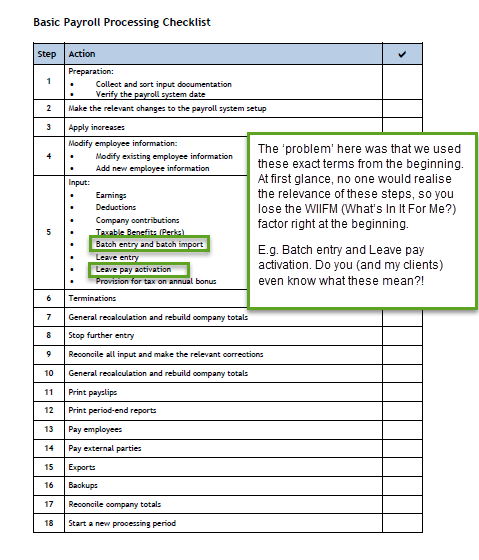 Learning objectives after creating context:
Learning objectives after creating context:
I suspect you may be able to associate with these terms more and may even be a bit curious as to exactly how one will go about doing these, YES, you want to click on that juicy hyperlink because you have realised what is in it for you and WHAM BAM THANK YOU MA’M, you are primed for learning about whatever comes after you’ve clicked…hey?
2. Here’s another example of our more advanced course, where I introduced Tim (the course’s avatar) as the average payroll super hero who knows how to make the system work for him and how to save time and effort whilst doing it.
Learning objectives before creating context:
Learning objectives after creating context:
When you click on the button you are taken to the menu where you can hover to view a summary or click for more detail:
If you hover over a button (button changes to ‘I want this ability’ and you then click to learn how to gain the ‘ability’):
Who doesn’t want to be a super hero…?
This approach, as illustrated with these two examples, has received rave reviews and the clients feel confident after this type of training – all the necessary ingredients for a winning recipe. It is a privilege to share my lessons learnt and I hope it is of great value to others!
